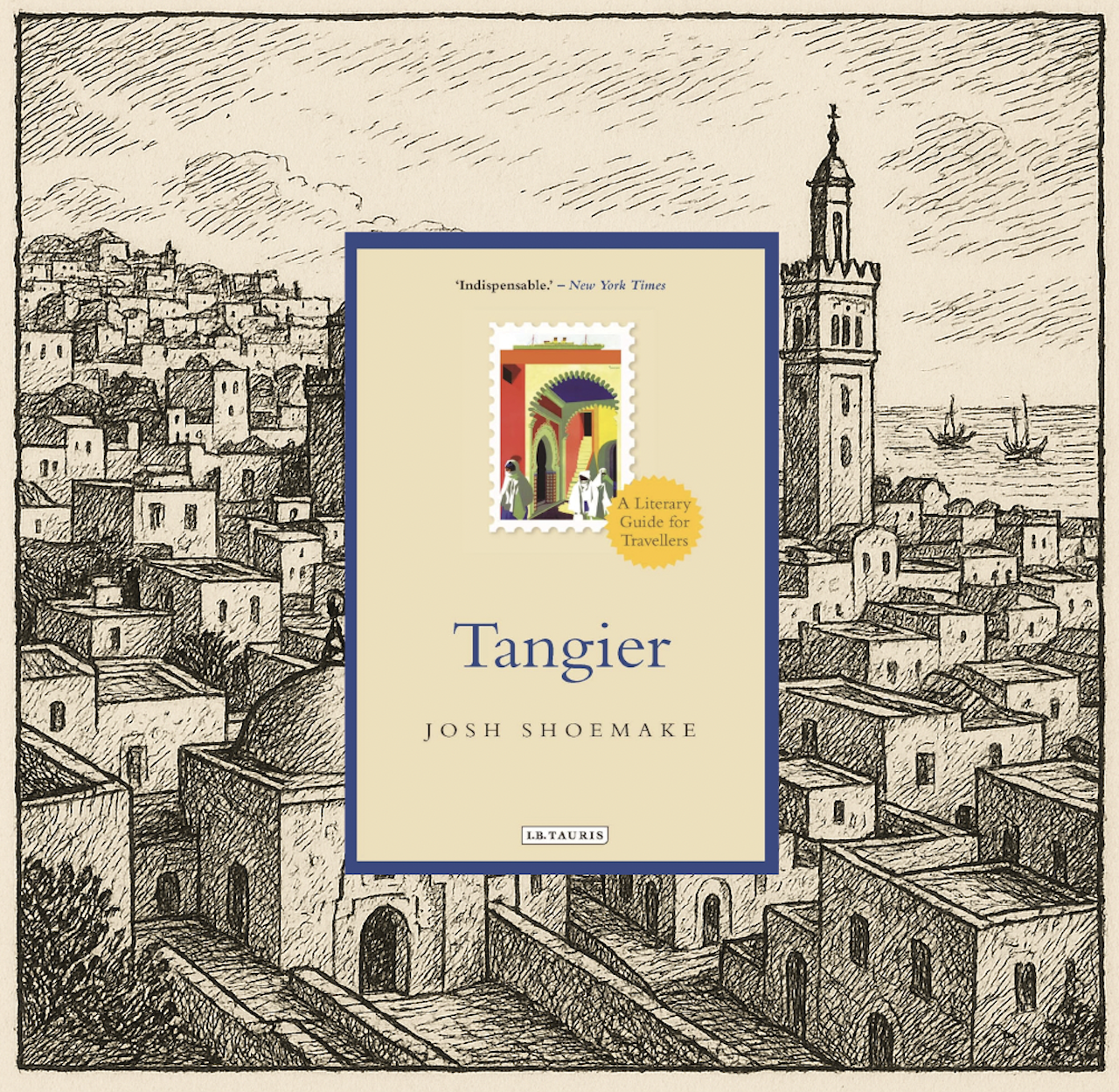In the spring of 2019, Chienfa and I visited Tangier for the first time and stayed at the wonderful, albeit somewhat dilapidated at the time, Hotel Continental, with a privileged view of the city and the Mediterranean Sea. It was at this hotel that Bertolucci filmed part of The Sheltering Sky in 1990, a film in which the author of the novel, Paul Bowles, himself makes a cameo appearance. I remember arriving after taking a taxi from the airport and communicating with the taxi driver through Google Translate, something unusual in Tangier, since no matter what language you speak, they speak it. It should be remembered that, for several years in the 20th century, Tangier was an international city (“The Interzone,” as writer William Burroughs called it).
When we got out of the taxi, we were harassed by several boys offering to give us a tour of the city and show us the secrets of the Medina. Half dazed, perhaps half jetlagged, we accepted the proposal of one of these improvised guides who gave us a tour of the Medina, took us to a tiny restaurant that no longer exists where we tried tajine for the first time and had lunch as God or Allah intended.
We then continued our tour through the narrow alleys of the Medina, where walking is not about moving forward but about losing yourself, a labyrinth that absorbs you and ends at the Place de Kasbah, the highest point in the city from where you can once again see the Mediterranean and, on clear days, even the Strait of Gibraltar.
The tour also included a visit to a carpet shop, where I was able to experience haggling, an almost obligatory art in Tangier, where the real price of goods is never the first to be mentioned. I remember the seller’s initial friendliness, his overwhelming words, and my refusal to buy anything, which he understood as haggling. I remember him looking at Chienfa in frustration and saying, “Where did you find this stingy man?” I finally ended up buying a small orange rug that we brought back to Miami and used for a while in the Calle Ocho apartment where we lived for several years.
“You can be whoever you want in Tangier. You can reinvent yourself, rewrite your past, transform or deform yourself, give free rein to your subconscious, cultivate nemeses, or simply start from scratch. It is a border town, suspended between worlds, on the edge between East and West, between North and South.”
Thus begins Tangier, Josh Shoemake’s fascinating literary guide to the city. Shoemake has lived in Morocco since 1996, where he has taught literature and befriended Paul Bowles in the last years of the writer’s life. In preparation for a trip we have planned, Chienfa, as she often does, bought several books, including this one by Shoemake. Written in delightful prose that flows with freshness and humor (I laughed out loud several times while reading the book, for example, at the story of the English preacher giving a sermon in the Grand Socco market and Walter Harris, an English writer who lived and died in Tangier, concerned for the man’s safety, approached and noticed that the Moroccan translator, in his immense wisdom, was not repeating the preacher’s message of salvation but was telling a fantastic tale, with a touch of fable and magic that had nothing to do with the Englishman’s religious fervor).
The book is an extraordinary compendium of stories and anecdotes about writers who have lived in or visited Tangier. Organized into chapters named after different places in the city, Shoemake weaves together stories about a long list of authors touched by this magical place: Paul Bowles and William Burroughs, who appear throughout most of the book, but also Truman Capote, Ian Fleming, Jack Kerouac, Mark Twain, Gore Vidal, Brion Gysin, Walter Harris, Juan Goytisolo, and Allen Ginsberg, among others.
There is a delightful anecdote about the latter in the book:
“Although (Paul) Bowles never particularly appreciated (Allen) Ginsberg’s poetry, he was attracted to the characters and, at least, valued the young man’s energy and drive. However, the author of Howl had an unfortunate tendency to declaim. In 1959, the Library of Congress asked Bowles to travel throughout Morocco recording traditional music from each region. At that time, there was one last muezzin in Tangier who still sang from the top of his mosque without the aid of a modern amplifier, although he had decided to start using one as well, to make himself heard above the clamor of his rivals. To capture this memorable occasion—the last unamplified call to prayer in the history of Tangier—Bowles decided to use the sophisticated portable recorder he had acquired for his travels on behalf of Congress. He invited Ginsberg, who was visiting the city again that year, to accompany him to a café next to the mosque where the last call would be sung, and placed the machine on the table. When the muezzin began to sing, the moment was both beautiful and bittersweet… about which Ginsberg could not help but comment at length, leaving Bowles with a recording in which the only audible sound was the declamatory voice of Allen Ginsberg.”
I read this book as I walked through Tangier: losing myself in the Medina. Its stories follow the confusing map of the alleys, discovering new things around every corner.




